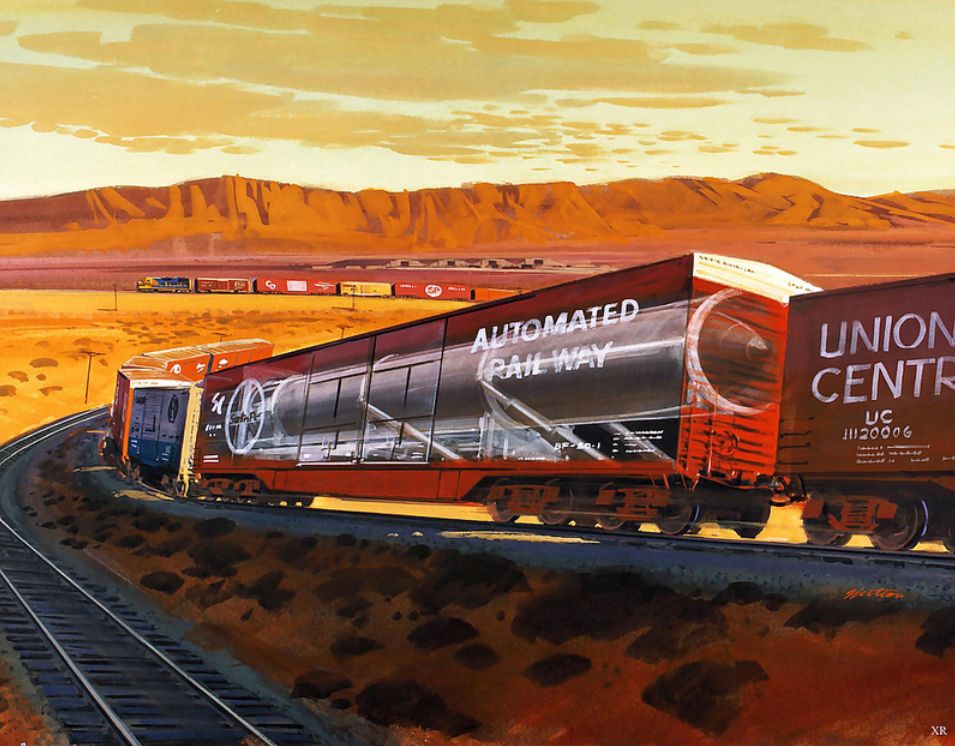Over at Popular Mechanics, Kyle Mizokami reports that Russia is developing a rail-mounted system of mobile ICBMs that will constantly rove the country, making “the country’s nuclear arsenal more mobile and thus more difficult to locate in wartime.”
Fantastic idea. But it’s hardly a new idea.
The Peacekeeper Rail Garrison Car Program was developed by the U.S. Air Force in the 1980s, during the Reagan Administration, as a way to keep the upcoming LGM-118 Peacekeeper (MX) ICBM on the move and disguised in the event of nuclear war.
The 50 missile launchers would be installed in pairs in 25 trains specially built by the St. Louis Refrigerator Car Company.
The program was disbanded in 1991 with the easing up of tensions between the Soviet Union and the United States.
If you like illustration art, it’s interesting to note that this drawing of a railcar with a missile inside looks like the style of cutaways from the 1960s–lurid colors, chunky brush strokes.
Source: Flickr / X-Ray-Delta
